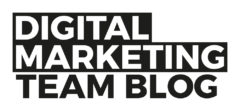Improving user experience. Enhancing conversion rates.
Back in June 2016 we began looking at how we could improve the user experience for those exploring course and subject level information. Subject pages were used in some areas of the website as a way of grouping related course pages together. But they were being used inconsistently; the layouts and designs varied between colleges, some courses weren’t associated with a subject page at all, and none of the pages were responsive.
This inconsistency was impacting on the student journey by making it harder for users to find and browse course information.
We also knew from a previous search engine optimisation (SEO) project that we needed more specific subject area content on our website to improve our search rankings. From a marketing campaign perspective, we knew that we also needed responsive subject areas to direct specific campaign traffic.
So we launched a project to create a standardised design for all subject pages across the university. With 50 subject areas that cover all of our courses, and a tight timescale in which to deliver so much new content, it was a challenge that would be delivered in conjunction with colleagues from across the marketing department.
Developing the page

The whole process started by working with the dedicated college marketing teams. We ran workshops to understand the type of content they would like to be able to host on these pages, discuss how they might look and how campaigns would be using them. It became clear quite early on that thes pages needed to make it easy for users to order a prospectus or book onto an open day – after all these are our key calls to action.
Having gathered our requirements, we spent some time sketching initial designs which were then interpreted as a wireframe concept (see below – I’m no designer!).

Release and launch
Rolling out the new subject area pages was a significant task. It meant drafting in staff from the college marketing teams to implement the pages across all 50 subject areas.m – very much a team effort.
Part-way through the year we undertook some more work to make these pages more conversion focused – driving more users to book open days or order a prospectus. You can see the pink bar that was added which made the key calls to action more prominent.

The design met all the requirements we identified at the start of the project, but the impact on the user experience and how it engaged prospective students was going to be the real measure of success…
Impact
For the purposes of this review, I am going to continue to focus on the Forensic Science page, but the impact has been similar for all other subject areas.
Comparing the performance of the previous subject area page to the new one gives you some idea of how successful they have been for goal conversion (Open Day bookings and/or prospectus orders).
|
Goal |
2015-16 Old subject area page |
2016-17 New subject area page |
|
Prospectus orders |
22 |
253 |
|
Open day bookings |
43 |
200 |
We can also see that users are spending more time on our new subject pages. This shows that the new layout has improved the user experience of our site and helped to increase those all important conversions.


